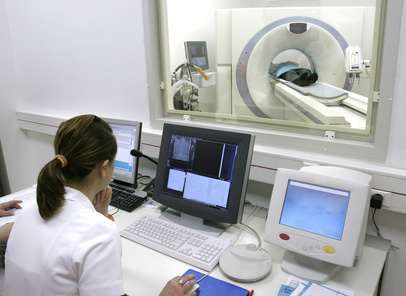This study describes the accuracy of the new computed tomography (CT) technique to calculate fractional flow reserve (FFR).
Other CT techniques to measure FFR use allometric scaling and assume coronary microvascular resistance. However, instead of assuming these parameters, this new technique calculates them based on coronary and aorta lumen deformation. The accuracy of this new technique has not been established yet.
The study prospectively analyzed 42 patients (78 vessels) undergoing multislice CT (320 detectors) in addition to conventional invasive FFR measurement.
Deformation of coronary cross-sectional lumen and aorta acquired over diastole was used to derive CT-FFR. Researchers used a conventional computer and the pertinent software.
The first 12 patients were used to determine CT-FFR optimal cutoff value, which turned out to be identical to the conventional FFR cutoff value (≤0.8). The next 30 patients validated these results.
The first cohort showed that CT-FFR optimal cutoff value was 0.8, with 67% sensitivity and 91% specificity.
In the validation cohort, CT-FFR was successfully measured in 56 of the 58 analyzed vessels (97%). Compared to anatomical CT images alone, CT-FFR ≤0.8 showed higher specificity (87% vs. 74%) and positive predictive value (74% vs. 60%) with comparable sensitivity (78% vs. 79%) and negative predictive value (89% vs. 88%).
Mean analysis time of CF-FFR per patient was 27.07 ± 7.54 min.
Conclusion
This new technique to measure CT-FFR is feasible and extremely easy to replicate with a conventional FFR cutoff value of 0.8. It requires a short processing time and can be done in a conventional computer.
Editorial Comment
Computed tomography FFR is a less invasive diagnostic tool, it is safe, and in some countries, less expensive than conventional coronary angiography. On the other hand, it adds radiation and contrast and does not solve the problem with ad hoc PCI, which makes it useless in case of patients at high risk of heart disease.
Original Title: Noninvasive CT-Derived FFR Based on Structural and Fluid Analysis- A Comparison with Invasive FFR for Detection of Functionally Significant Stenosis.
Reference: Ko BS et al. J Am Coll Cardiol Img. 2016. Online before print.
Subscribe to our weekly newsletter
Get the latest scientific articles on interventional cardiology
We are interested in your opinion. Please, leave your comments, thoughts, questions, etc., below. They will be most welcome.






